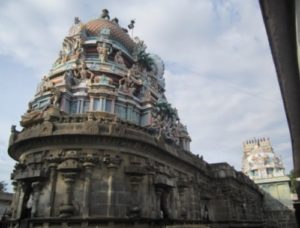How Navrathri is Celebrated in TamilNadu !!
In South India, especially in Tamil Nadu, Navrathri is celebrated as Golu or Kolu. This concept of setting up the dolls for Golu marks the celebration in Tamilnadu as a bit different one from the rest of India.
The origin of the word Golu can be traced to Tamil word ‘Kolu’ or Telugu word ‘Koluvai’, which means a Sovereign or a Supreme Person sitting in the royal durbar. As per belief, the concept of arranging these Navrathri dolls on the plank/steps is to depict that Goddess Mahishasuramardini is sitting in her Kolu (Royal Durbar), prior to the slaying of the demon Mahishasura.
So during Navrathri, people buy many idols that include gods, goddesses, animals, birds and rural life all in a miniature design and they try to create various settings that portray our culture and heritage. These idols & dolls are arranged in wood/steel stair (Golu Padi) specially built for this purpose. It is something like a mini-museum at home. Some of these settings will talk about mythology and others about the lives during ancient times. During these periods, friends and families invite each other to visit their homes to view their Golu displays and then exchange gifts and sweets.
This tradition of Golu is also found in other parts of South India such as Andhra Pradesh where it called Bommala Koluvu, and Karnataka where it is called Gombe Habba or Gombe Totti.
The Ninth day of Navaratri is celebrated as Ayudha pooja and it has a special significance. On this day, all articles that are used for the progress and prosperity of mankind are worshipped. Even the buses, cars, bicycles and other tools are honored and worshipped for their contribution to our existence and comfort.
In the evening of “Vijayadasami“, the 10th Day, of Navrathri, anyone doll from the “Golu” is symbolically put to sleep and the Kalasa is moved a bit towards North to mark the end of that year’s Navaratri Golu.



